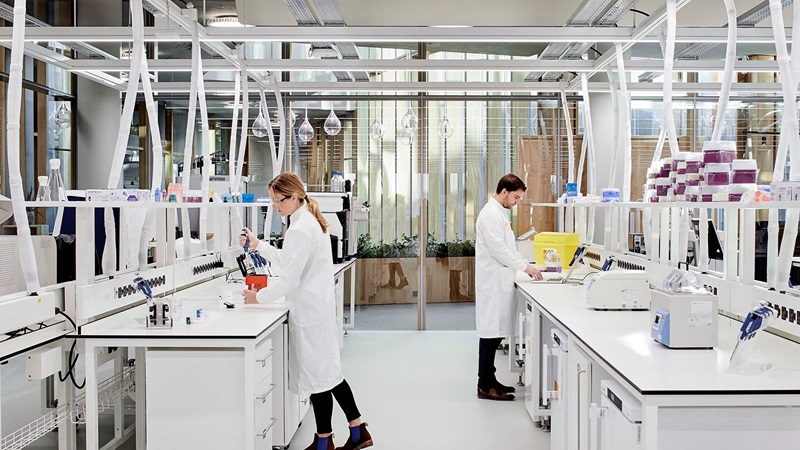How can the life sciences sector rise to the net zero challenge?
For today’s life science and pharmaceutical leaders, a net zero carbon plan is no longer ‘a nice to have’, but a must.
Planning permissions, green finance and access to funding all now hinge on demonstrating a robust strategy, as occupiers demand sustainability credentials from their buildings. And from April 2022, the UK will become the first G20 country to make it mandatory for Britain’s financial institutions and large private companies to disclose their climate-related risks and opportunities.
The pharmaceuticals and life sciences industry is one of many that produce large quantities of carbon emissions and according to the Department of International Trade, more than 5,600 life sciences businesses already operate in the UK — with that number set to rapidly increase over the next ten years.
With this ever-increasing demand for science spaces, how can we as leaders in the built environment ensure that net zero is no longer an afterthought for the sector, and that decarbonisation is built into structures, systems and operations?
Net zero from the get-go
A contractor’s role is critical in turning a designer’s vision to reality, and if we want to achieve significant carbon reductions, early engagement with the design and construction team is key in ensuring priorities are built into those beginning stages. While retrofitting is often a possibility if sustainable options haven’t been considered early on, it’s a process that will be costly when the UK Government’s carbon targets come into law by 2050.
Lab buildings typically incorporate high volumes of embodied carbon. This is due to the steel and concrete required for structural systems that both limit building vibration and support heavy building loads. So identifying low carbon materials - such as recycled carbon steel, cement-free concrete and sustainably sourced timber - can achieve significant savings.
On the operational side, laboratories are often energy intensive, consuming up to ten times more energy per square metre than commercial office buildings. But carbon saving can be achieved here via a range of methods; from energy efficient ventilation, lighting, heating and cooling systems, to sourcing clean or renewable energy.
At a process level, end-users must also play their part in reducing emissions. Can they identify and use more efficient, alternative equipment that produces less embodied carbon, or even use existing equipment in different ways? For example, freezers run at -70o as opposed to -80o, save 25% more energy. And it’s these small changes that can make all the difference. With this in mind, there are a number of guides and self-assessment tools available that can help to minimise carbon at floor level e.g. LEAF, My Green Lab.
Build clever
The most successful science facilities are intrinsically flexible by design. This flexibility is crucial in maximising carbon reduction opportunities throughout a building’s lifecycle and, at the same time, provides the greatest value in lab space design for owners and users.
Capacity is key to flexibility and most landlords are realising the benefit of higher capital investment at the start of the project, preempting future science and avoiding energy intensive upgrades.
Mechanical, electrical, and plumbing (MEP) systems account for 30-50% of the overall construction costs and are difficult to retrofit. Designing these services with plenty of clearance above ceiling and below floor will allow for flexibility between office, lab and collaborative spaces as the science evolves.
It is also pivotal to embrace circular economy principles of reducing, reusing and recycling throughout construction, incorporating building elements that can be repurposed at the end of a building’s lifecycle. This approach retains investment in materials by re-purposing elements for reuse.
Accelerate innovation
The industry does not yet have an easily accessible body of accurate data on low-carbon build and operations for decision-making. But great strides have been made in the last two years - from carbon calculators that determine the carbon footprint of a building to material passports, where each building component is analysed to determine what can be re-used or recycled.
Many of the materials in use are carbon intensive, so innovation will be central to unlocking the potential of low-carbon cement, recycled steel and aluminium alternatives. To drive real progress, we must do more to share knowledge and create an open collaborative environment - not only with supply chain partners but within the construction industry as a whole.
The tides of change are already upon us. Investors are now demanding net zero strategies before financing projects and planning applications are being refused due to concerns over carbon emissions. It’s a widespread change in attitude and the pursuit of a sustainable world is one that will continue to redefine almost every industry. And that’s why the time to act is now.












